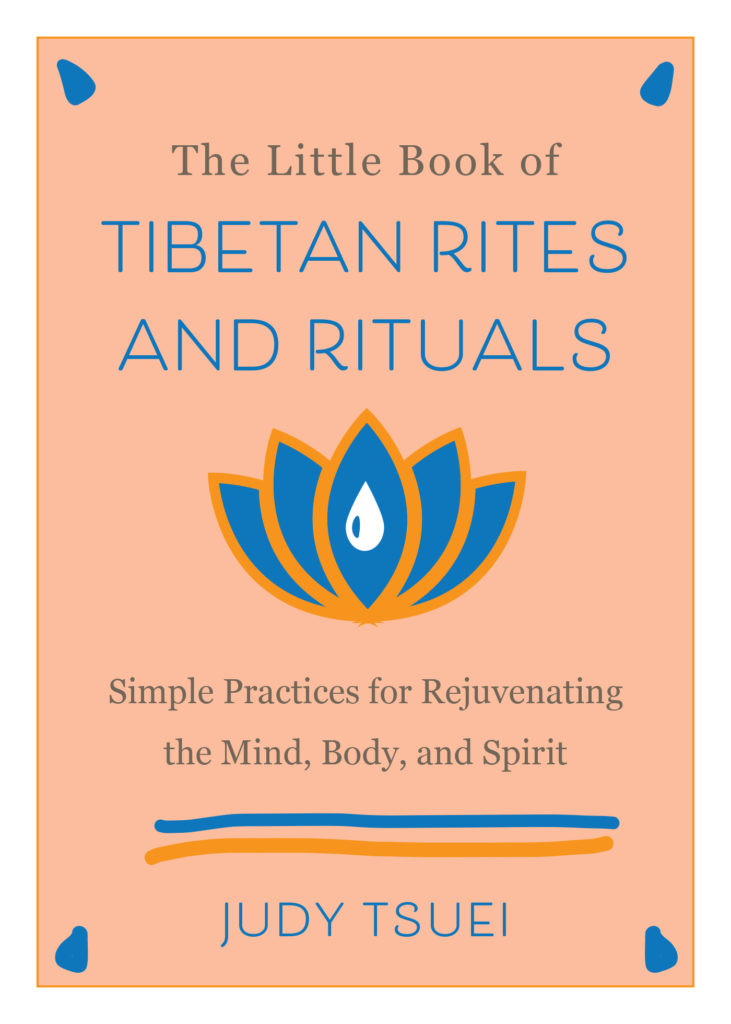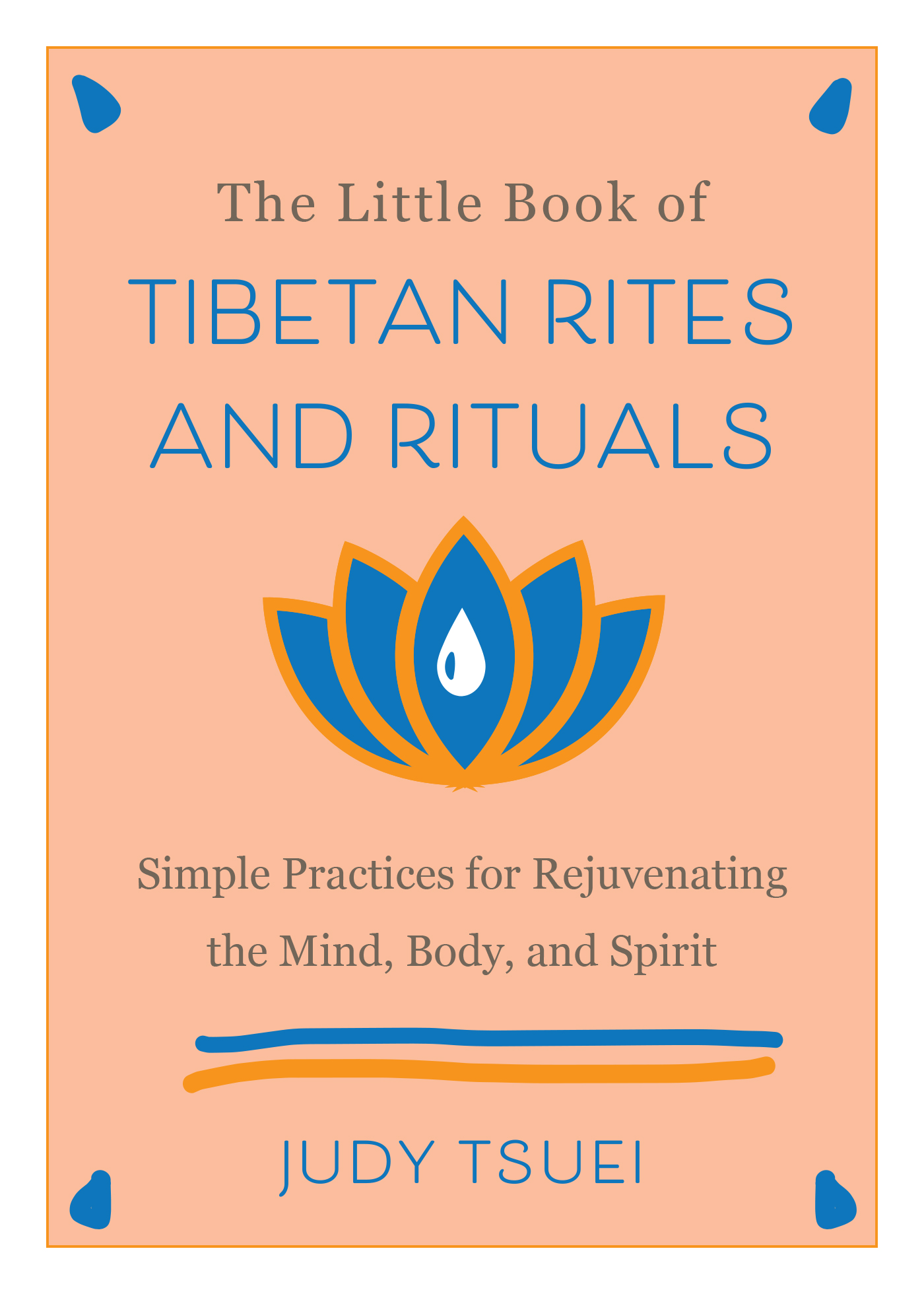
The 5 Tibetan Rites: Tips for Your Rejuvenating Practice
- Book Sample /
- Mind, Body, Spirit
 Practicing the Five Tibetan Rites can have amazing benefits–they incorporate physical, mental, and spiritual exercises to open your mind and improve your overall health. The following tips are adapted from The Little Book of Tibetan Rites and Rituals by Judy Tsuei, which will teach you wisdom of the Five Rites, the benefits of practicing, and how to integrate these ancient yantra yoga exercises and philosophy into your modern life.
Practicing the Five Tibetan Rites can have amazing benefits–they incorporate physical, mental, and spiritual exercises to open your mind and improve your overall health. The following tips are adapted from The Little Book of Tibetan Rites and Rituals by Judy Tsuei, which will teach you wisdom of the Five Rites, the benefits of practicing, and how to integrate these ancient yantra yoga exercises and philosophy into your modern life.
* * * * *
It’s important to be diligent when practicing the Five Tibetan Rites or even applying various facets of Tibetan Buddhist beliefs. Because one of the Buddhist principles is to attain a favorable rebirth, while understanding that most individuals will not achieve enlightenment in one lifetime, persevering with your practice can help keep you focused on your goals.
Wise teachers say that you can’t find time to meditate, but rather you have to make time. In the same way, see if you can make time for your practice of the Five Tibetan Rites. The good news is that you can perform the Rites anytime, anywhere. The most important thing to remember is to fit this practice to your unique physical requirements—and into your mental, emotional, and spiritual journey—so that it becomes part of your overall lifestyle.
The following are a few suggestions to support your experience. How will you begin your practice of the Five Tibetan Rites? What will your routine look like on most days?
Choose the Time of Day for the Tibetan Rites
It’s optimal to practice in the morning before breakfast or in the evening before going to bed. However, some people feel more energized after performing the Five Tibetan Rites, so you may find it counterproductive to practice before bed as it would wind you up rather than down. Try the Five Tibetan Rites out for yourself and see what works for you, understanding that every day is different, so what you need in this moment may be different as well.
Pay Attention
By bringing a sense of ritual or attentiveness to your practice, you can create your own personal sanctuary. Perhaps you’d like to light a candle or incense, wash your hands or face, say a mantra, set an intention, write in your journal, meditate, or do a little movement— even dancing! Whatever you choose, you can make the Five Tibetan Rites a special experience every day.
Practice the Tibetan Rites on an Empty Stomach
Experts recommend practicing the Five Tibetan Rites approximately two hours after your previous meal, since the digestive process requires energy. The aim is to increase the flow of vital life energy, and practicing when you’re not digesting lets your body direct energy where it’s needed. When food is in the digestive tract, your body uses blood and circulatory energy to absorb nutrients and produce hormones, enzymes, and chemicals, all to manage the digestive process. Yoga poses and breathwork take energy away from the digestive system, which limits your body’s ability to digest. What’s more, you might experience nausea, bloating, or gas during practice if you’ve recently eaten.
If you’re hungry and need a little something prior to practicing the Five Tibetan Rites, eat a small portion of an easily digestible food (such as a banana) about 30 minutes before doing the movements.
Choose Comfortable Clothing and Props
Traditionally the Five Tibetan Rites are practiced on a densely woven rug about the size of a yoga mat. But you really don’t need any special equipment to begin. A normal yoga mat or even the bare floor is fine. If you’re looking to purchase a mat and want optimal support, look for a thick mat that’s firm, resilient, and (ideally) produced with nontoxic sustainable materials. You can also use cushions or other props for added comfort and support.
When it comes to clothing, you’ll want to wear loose, nonrestrictive clothing that allows for total freedom of movement, preferably made of light, breathable materials such as organic cotton, hemp, linen, or bamboo.
Set the Space
If possible, create a space designated solely for doing the Five Tibetan Rites and your yoga, mindfulness, and breathing practice. Find a pleasant, spacious, clean place that’s well ventilated and neither too hot nor too cold.
Let your practice become a special time devoted to your personal health and well-being, as well as an opportunity to honor and respect yourself. The most important element is to become more present with yourself, experiencing a sense of gratitude that you have shown up for every moment of your life thus far—because you have indeed made it through every single one of the hardest moments of your life. Good for you for beginning.
Disclaimer: As with any exercise regimen, please consult first with a physician and make any modifications necessary for your unique body. No book can cover all the potential effects that might arise when you perform certain movements, or offer in-depth advice on how to develop the Five Tibetan Rites to your own fullest capacity, so it’s highly recommended that you seek an experienced teacher to guide you in developing your practice. This is especially true if you have a medical condition or any doubts about doing certain exercises, or if you are pregnant. If you are menstruating, yoga teachers generally advise that you avoid inverted positions and approach strong holds with less intensity.
The Little Book of Tibetan Rites and Rituals
Discover the mind and body benefits of yantra yoga exercises, Buddhist wisdom, and Tibetan philosophy for a happier and healthier life. Allow the teachings of sacred Himalayan philosophy to improve your mind, body, and soul. These Tibetan rituals incorporate physical, mental, and spiritual exercises to open your mind and improve your
Learn more








